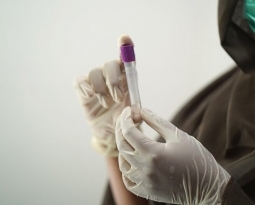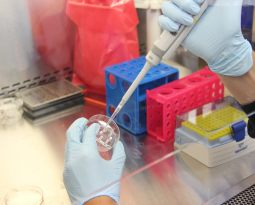Georgia Patent of the Month – December 2021
After a surgical procedure, a patient often experiences limited range of motion. Commonly termed “frozen shoulder” or “stiff knee”, these conditions are a result of scar tissue buildup. The typical next steps involve physical therapy aimed at breaking down this scar tissue to regain mobility. Unfortunately, the best chance at results involves a hefty time commitment – and can be costly as well. The patient would be required to practice or receive therapy multiple times per day for an extended period of time, or move into at-home practices. At-home practices are unsupervised and may lead to additional injury if poor form is used.
T-REX Investment, Inc. has developed a system which allows a patient to perform these rehabilitation exercises in a controlled and safe way. In their system, the patient can be prescribed PNF exercises which can be loaded remotely to the computer system to automatically set a desired schedule and provide instructions for the exercises. PNF is a stretching technique utilized to increase ROM and flexibility. The exercise machine then also monitors the patient’s progress and sends reports to the physician. Thanks to this programmable aspect, the range of motion systems can be easily customized to the patient.
The system has a seat and attachments for the patient. The attachment used depends on the therapy at hand. For instance, it may have arm attachments if training shoulder mobility or leg attachments for knee mobility. The limb is secured in place and a series of bionic actuators move the limb through the prescribed stretches.
Since the device is a biometric stretching device, it automatically (under direction from the uploaded stretching regimen) replicates the high intensity stretching used in physical therapy, moving your leg or arm as needed. With high-torque motors, it can emulate the force and motion of a manual therapy process. It offers resistance practice as well as PNF stretching. With both of these, the patient can train for both passive and active motions.
By providing a safe and effective source of exercise for patient’s, the regiment can be limited to a 45 minute period once daily. Since it can be performed at home, it can easily fit in most people’s lifestyles and is less likely to break the bank.
Are you developing new technology for an existing application? Did you know your development work could be eligible for the R&D Tax Credit and you can receive up to 14% back on your expenses? Even if your development isn’t successful your work may still qualify for R&D credits (i.e. you don’t need to have a patent to qualify). To find out more, please contact a Swanson Reed R&D Specialist today or check out our free online eligibility test.
Who We Are:
Swanson Reed is one of the U.S.’ largest Specialist R&D tax advisory firms. We manage all facets of the R&D tax credit program, from claim preparation and audit compliance to claim disputes.
Swanson Reed regularly hosts free webinars and provides free IRS CE and CPE credits for CPAs. For more information please visit us at www.swansonreed.com/webinars or contact your usual Swanson Reed representative.

















